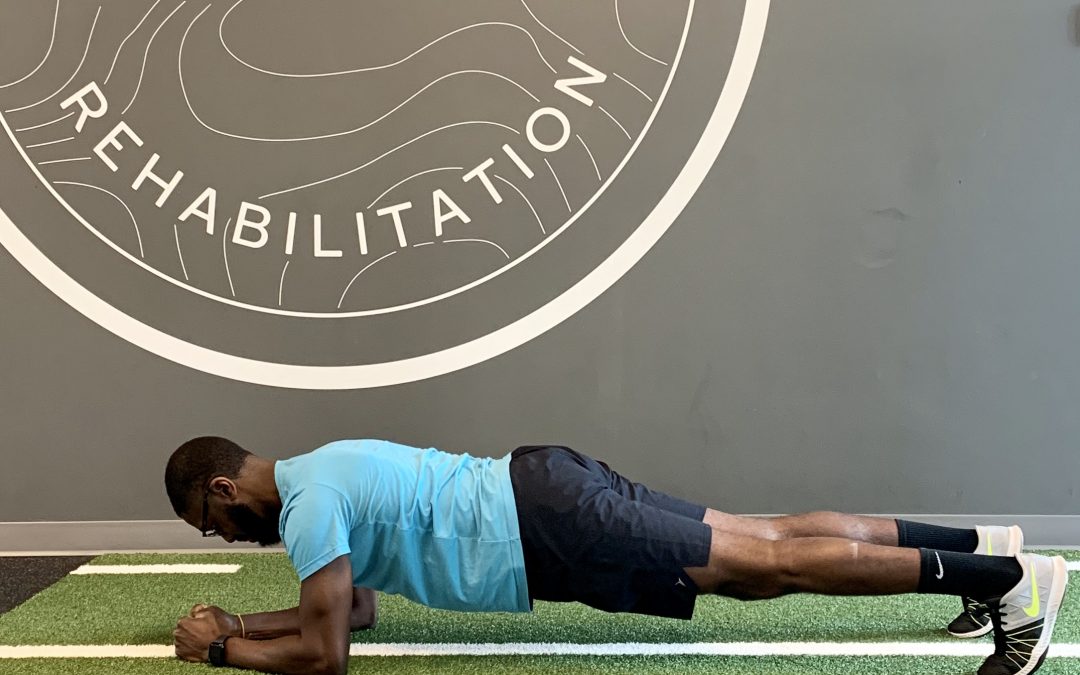By Coast Performance Rehab Clinic
Core Exercises for Runners
One of the worst things that can happen to a runner is to be sidelined by an injury, especially just before an important race. There are numerous reasons why runners get injured: training errors, biomechanics, muscle imbalances, or just bad luck. But every runner can significantly reduce their chance of injuries by building a stronger and more resilient body.
One of the key areas a runner should focus on is core strength and stability, especially for distance runners. The core is not just your superficial abs, it is made up of the pelvis, lower back, hips and abdomen. By doing regular core exercises, you are training these muscles to work together to help stabilize the spine and pelvis. This will improve your running form, efficiency, performance and reduce injuries.
Here are four killer exercises to injury proof your body:
Plank
A classic and essential exercise in any runner’s toolbox. Exercises don’t need to be complicated to be effective. In fact, sometimes the simpler the better because it is easier to perform them correctly. The plank targets the core stabilizing muscles, which are constantly being challenged with every step you take on a run.
If this exercise is too difficult, modify the exercise by dropping down to your knees.
- Get into a forearm plank position, with your elbows directly under your shoulders and your feet hip width apart.
- Actively engage your abdominal muscles to prevent your back from sagging.
- Keep your hips lifted so that they are in line with your shoulders.
- Think about creating a long line from your head to your heels.
- Don’t hold your breath!
Side Plank
This plank variation targets the oblique muscles. Often neglected, the oblique muscles help control the rotation and side to side motion of your trunk and can also impact the position of your pelvis while running.
Again, if this exercise is too difficult, you can always do it from your knees.
- Lay on your side with your forearm directly under your shoulder, legs extended and hips stacked.
- Actively engage your abdominal muscles.
- Focus on lifting your hips up off the ground, don’t let your hips sag.
- Think about creating a long line from your head to your heels.
- Remember to breathe!
Wall Dead Bug
A challenging variation on the much loved Dead Bug exercise. This is another core-stabilizing exercise which is really important for your back. For this exercise to be effective, you really need to focus on slow and controlled movements.
If this exercise is too challenging, you can do a regular dead bug exercise.
- Lay on your back with your knees above your hips, bent at 90 degrees.
- Tuck your rib cage down and press your back into the floor.
- Raise your arms above your head and push against a wall to create tension in your core.
- Then slowly extend one leg at a time while pushing against the wall and keeping your core actively engaged.
Shoulder Taps
This last exercise targets the core while adding a level of instability to challenge your abdominal muscles and their ability to resist rotation.
It is really important to do this exercise correctly and may not be for everyone. If it is too difficult, drop down to your knees.
- Start in a high plank position with your hands directly under your shoulders.
- Your feet should be hip width apart. To make this exercise a bit easier, you can step your feet out a bit wider.
- Actively engage your abdominal muscles.
- Lift one hand and tap the opposite shoulder, then lift the other hand and tap the opposite shoulder.
- The key is to focus on keeping your hips and abdomen stable and not shift your weight back and forth..
Injury-proof your body and book your appointment at COAST today! Learn more


Trackbacks/Pingbacks